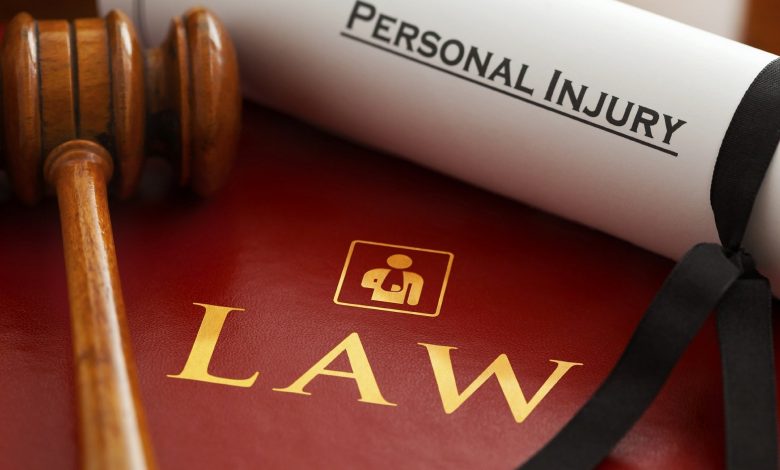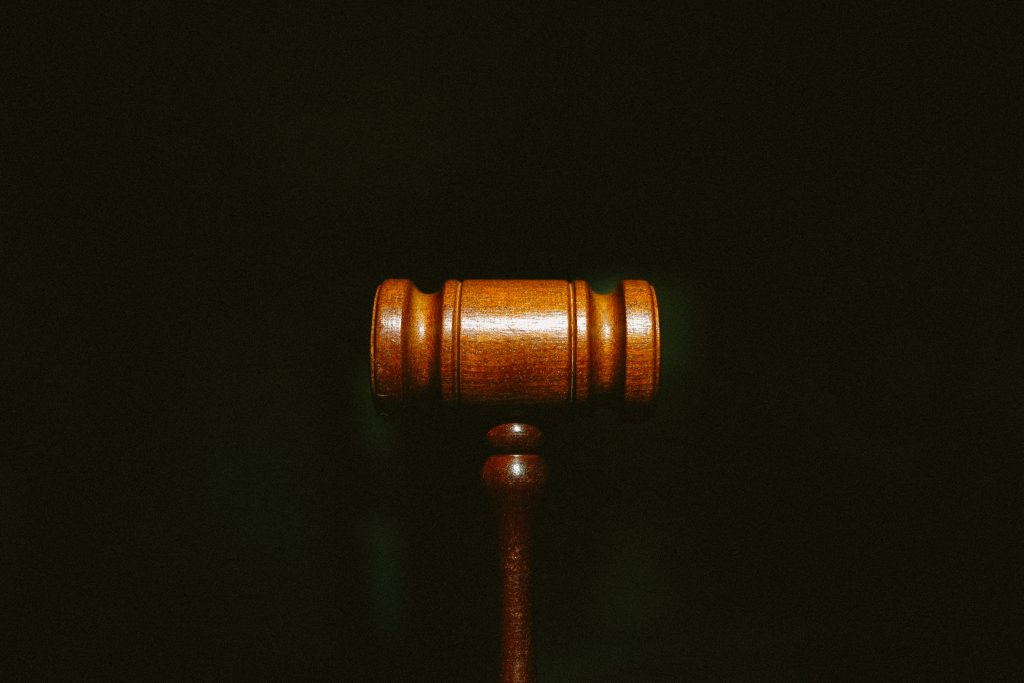Tort Law Definition & Examples

Law can pretty much be divided into two categories: criminal and civil, often referred to as tort law. A tort is a civil infraction – one that causes harm to another person. Here, “harm” is a pretty broad term that encompasses any type of wrongdoing that causes the victim to be physically or emotionally injured, suffer a loss, or otherwise experience damage that they are eligible to sue for. Sometimes these could also be charged as a criminal charge, but in this case, the plaintiff is generally the victim, and they are seeking compensation for the injury they suffered. A tort case, often called a personal injury case, is one in which the judge is determining if the defendant is at fault for committing the injury against the victim, as well as how much compensation the injured party is eligible for if the defendant is found guilty. There are quite a few terms and laws to be familiar with concerning tort law and cases, but knowing the law can help to develop a defense. There are several types of penalties that can come with a tort law guilty verdict, but financial compensation is most common. If you aren’t sure where to begin, contacting an attorney may be the best first step to determine if you have a case.
Tort Law Definitions
Tort laws have quite a few purposes, namely to provide compensation when injury or harm occur, deter citizens from committing crimes against each other, and establish penalties and liability for when these harmful acts do occur. Though exact laws will likely vary by state, they can also vary from judge to judge, as they often have a wide discretion concerning what the language of the law means, what actions actually apply to those laws, what defenses they find acceptable for each individual case, and the appropriate compensation and penalties to match both the defendant’s liability and the plaintiff’s injury.
Types of Torts
There are three main terms that torts can be categorized in:
Intentional Torts
An intentional tort occurs when the defendant willfully and knowingly commits their wrongdoing. These are the cases that often can be criminal and civil in nature, but the main difference separating the two is whether the case is being pursued because of crimes committed that interfered with society or with the injured party, although they can absolutely be both. However, when the plaintiff is the injured party, not a state or federal prosecutor, it’s a civil, or tort, case. These are usually instances of injury or harm to someone’s property or well-being. Even if the defendant didn’t intend to actually harm the victim, just intending to commit the wrongful act is enough for a guilty verdict in an intentional tort case, but it is always necessary for intent to be proven in these cases.
Negligent Torts
The most common kind of tort doesn’t require intent; however, negligent torts do require that there be some kind of recklessness or abandonment of one’s legal or civil duty. In other words, while the defendant didn’t necessarily intend to cause harm or injury to someone, as a result of their unreasonable actions, a wrongful act has occurred. These are often accidents in which someone’s carelessness caused a harm or they avoided a duty to provide some type of care or assistance. They will generally require the following four elements:
- Someone’s duty of care or duty to act
- That duty was breached
- The victim suffered harm
- The harm was a result of that duty being breached
Proving someone’s duty to act will typically involve evidence of the defendant creating the risk that caused the victim’s harm, the defendant volunteering to keep the victim from harm, the defendant being aware that their actions could harm the victim, or that there was some sort of business or voluntary relationship between the defendant and the victim – such as a business owner and client, an employer and employee, or a defendant who took custody of the victim. The harm that occurred must be either bodily harm or harm to their property, which usually means that economic loss isn’t enough for a negligence case. A breach will be determined by analyzing the level of care that the defendant had a duty to perform, as well as what any reasonable person would do in that situation and whether the proper care was taken to either provide assistance or prevent the harm from occurring. If someone was harmed but it can be proven that the defendant took all appropriate precautions to avoid the injury, then they may not be found at fault.
Strict Liability Torts
In most criminal cases, strict liability won’t apply, with some exceptions like possession of drugs and statutory rape. However, they apply more often in civil cases. A strict liability case is one that doesn’t take into account the defendant’s intentions. It typically is used in cases involving the possession of certain animals, consumer product liability, and particularly dangerous behaviors. These tort cases don’t even require negligence or direct fault to be proven, but instead, they focus on whether a harm occurred as a result of the actions of the defendant. That means that the defendant could take all the precautions in the world, but if their actions were dangerous enough, they can still be found liable for the injured party.

Tort Examples
There are many types of civil torts, and some of them may overlap with criminal acts. There may also be acts that can fit in any category and ones that will typically remain as only intentional, negligent, or strict liability cases. Some examples of tort offenses include:
Assault and Battery
Assault and battery are actually two different acts. Assault is simply a threat to commit harm, while battery is the actual act of harming someone. These are typically intentional torts, although there may be a chance of it being a negligent tort if the defendant acted recklessly. Remedies for these cases will likely be awarded for medical expenses, as well as physical and emotional suffering.
Slander and Libel
Slander and libel involve saying or publishing a defamatory statement about someone. This statement must be untrue, and it must cause some kind of harm to the plaintiff, whether it be emotional damage, loss of employment or business, or damage to reputation. This is another crime that can be intentional or negligent, depending on whether the defendant intended to commit the act or if they simply didn’t pursue due diligence to confirm their information was true.
Fraud
Fraud will often be an intentional tort, and it occurs when the defendant has misrepresented something in order to cause harm or damages to the plaintiff. This is typically in the form of monetary loss, and it usually requires the defendant to know that their misrepresentation was false – or at least exhibit reckless disregard for the truth.
Trespassing
Trespassing is when someone violates their legal duty to respect others’ property, and their wrongdoing resulted in injury or damage to the plaintiff or their property. This is also usually going to be an intentional act.
False Imprisonment
Another intentional tort, false imprisonment involves forcefully prohibiting someone from leaving, whether that be by physically binding someone or threatening harm if they free themselves. The only exception for this is if a store owner genuinely believes the plaintiff was stealing or attempting to steal, as they have the right to detain them to investigate – but only for a reasonable amount of time.
Slip and Fall Accidents
A slip and fall accident will generally be an act of negligence, so the plaintiff must exhibit how the defendant’s actions caused them to fall and injure themselves. This can be caused by knowing there was a risk and failing to correct that risk.
Vehicular Accidents
When someone causes an accident, it’s typically a negligent tort, as it isn’t usually intentional. This may result in injuries to the plaintiff or damage to their property, which can be translated into compensatory penalties from the defendant.
Medical Malpractice
When a doctor, hospital, or other medical facility causes injury to the plaintiff as a result of their negligence, they can be held responsible civilly. Doctors and other medical professionals have a duty to cause no harm, but this does not extend to when they are reasonably performing their jobs and not acting carelessly. This can happen at any point in the medical process, be it diagnosis, treatment, general care, health management, or post-treatment care.
Defective Products
Often a strict liability tort, defective products can result in a plaintiff suing a defendant for damages that came as a result of their product malfunctioning. This means that the defendant may be held responsible even if they took proper precautions to prevent the damage from occurring. However, if it is pure recklessness, it can be a negligent tort.
Animal Attacks
Owners of pets are often held responsible for the actions of their animals, even if they don’t intend for the plaintiff to be injured. This is why they’re often strict liability cases.

Tort Penalties
Penalties in court cases will often be financial compensation paid to the plaintiff. As many tort cases involve injuries that result in loss employment or wages, physical or emotional suffering, and medical expenses, the judge will likely put some sort of monetary value on the damages the plaintiff suffered, and the defendant will be required to provide compensation. As the compensation is intended to be equal to the harm done, cases where there are severe injuries will come with more extreme pay outs.
In other cases, when deemed appropriate, the defendant may also be assigned a punitive penalty, which is any kind of sentencing that isn’t intended to compensate the plaintiff’s loss, but rather provide a punishment for the defendant. This will typically be in the form of extra fines.
Other remedies may include ordering the defendant to cease some kind of action that is actively causing or has caused damages to the plaintiff, or perhaps they may be instructed to start taking some precautionary measures or performing some extra actions to remedy their damage caused.
Tort Defenses
The type of defense used will likely depend on the type of tort committed. For example, the first course of action when defending an intentional tort will likely be to attempt to prove that the wrongdoing was not committed intentionally or that the damage was not a result of their actions.
Negligent torts have quite a few elements to prove, so they can specifically argue that they didn’t have a duty to act, they went through all necessary precautions, the plaintiff didn’t actually suffer harm, or that the harm wasn’t a result of their actions. That last defense may include arguing the plaintiffs’ own actions played some role in their harm coming about. They may do this by claiming that the plaintiff was also negligent, and their injuries actually came as a result of this negligence. In some states, simply proving that the plaintiff was one percent responsible is enough for them to lose all rights to compensation. They may also provide some kind of comparison of the plaintiff’s and defendant’s actions and determine who is more at fault for the incident. As such, some of these cases may include where the plaintiff is awarded a partial amount of their requested compensation, as they were partially at fault, or when the defendant is awarded compensation when their fault is simply lesser than or equal to the defendant’s.
Strict liability cases will vary greatly based on the case at hand. For example, in the case of the defendant’s animal biting and harming the plaintiff, they could argue that they were not aware that the animal was hostile or that the plaintiff exacerbated the situation. However, this won’t work in all states, as some states require pet owners to always be responsible for their animals. In cases where the plaintiff claims the defendant’s product caused their injuries, the defendant may display how the plaintiff’s misuse of the product is actually what led to the damages.
Some defenses that may apply to all torts include:
- Consent: The defendant may also look to prove that the plaintiff provided their consent for the action to take place, but it must be proven that it’s reasonable to believe that the plaintiff gave their consent and that they were capable of providing that consent. It should be noted that consent can be withdrawn during the commission of the act.
- Necessity: They may also argue that they committed the wrong doing out of necessity, as in, there was an emergency, and the harm caused was to negate worse harm from coming to the defendant, their property, or the general community.
- Self-defense: Self-defense is always a good option to turn to, but it requires that the defendant not have done anything to provoke the incident, but rather that they only used reasonable force to defend themselves or protect others from harm. This may also be extended to the protection of property in some cases.
- Assumption of risk: They may also argue that the plaintiff took on an assumption of risk when entering the situation, as they were aware of the risk and continued anyways.

Civil Lawyers
If you’re looking for an attorney to assist you with your case, you’ll likely want to look into what’s referred to as a personal injury lawyer, but you may be able to find one that specializes in your particular issue, such as medical malpractice, wrongful death, vehicular accidents, and more. There are several reasons why you may want to seek out the assistance of an attorney, the first being if you aren’t sure whether or not you have a case. You don’t want to go through the time and effort of taking someone to court if an attorney can easily tell you there’s no legal substance for your case – or if you may actually be at fault. However, if you do have a case, they can then instruct you on the best steps to take, and it’s much more likely that you’ll be successful. You may also need to determine who exactly is at fault, especially if there are multiple parties involved. Another reason why you may want to contact a lawyer is if you’re having issues with your insurance paying out to cover your injuries. Additionally, most lawyers are only going to charge you a percentage of what they win for you in court, so there isn’t too much to lose and a lot to gain from hiring an attorney if you’re able to.



